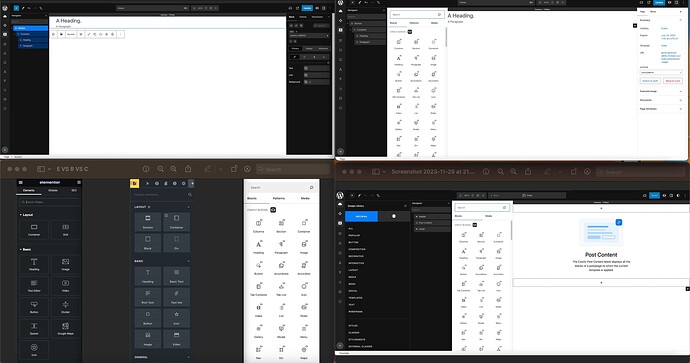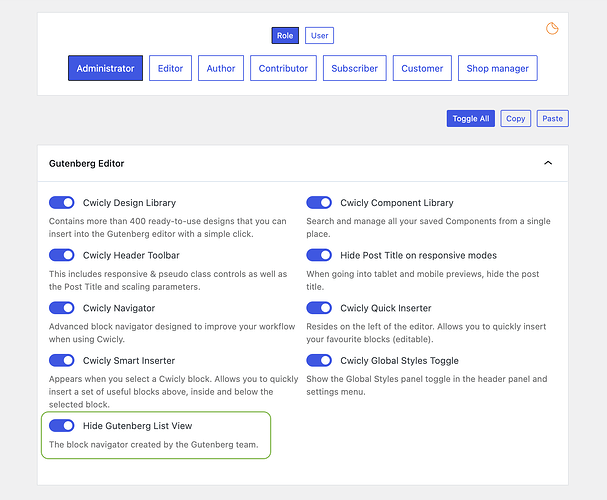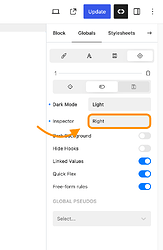Preface:
Page builders have been very successful in the WordPress ecosystem, and outside of it.
I have been building websites and using page builders since 2017, with Elementor, and more recently with Bricks, and thus, I am sharing feedback on the possible UI/UX improvements for Cwicly, as Cwicly is the first solution within native WordPress that looks very promising, and with the right UI/UX improvements might attract more users like me from the page building world to native Gutenberg environment with a layer of Cwicly on top of it.
Shifting Canvas size:
One of the major pet peeves about Gutenberg is the shift in canvas size when one uses the ‘Block Inserter’ Toggle. The whole layout shifts and it is very jarring, distracting, and annoying.
(I realise that there is a smart inserter from Cwicly and a vertical menu bar on the left, but I prefer using the Elements panel, and I suspect it is a common habit with all page builder users).
Unfortunately, the ‘Block Inserter’ Toggle in Gutenberg also opens up panels for Patterns and Media. Thus one has to constantly deal with a shifting canvas.
What is common among all page builders? From the most popular page builder, Elementor, to the newest professional page builder, Bricks, or any other page builder outside of Gutenberg?
The canvas size doesn’t shift. It is a constant. No matter what settings are being toggled or which panels are being used, the canvas doesn’t shift. This is a major plus point. This is how it must be. This is the ideal.
The general layout of any page builder within WordPress is that there are two panels on either side.
One is the Elements/Style panel, and the other is the Structure panel.
It has been a tried and tested UI/UX for almost a decade now and it has widespread market adoption.
There is no need to reinvent the wheel in this sphere.
Webflow uses a variation of this with the style panel on the right and the element panel on the left with a structure panel that doesn’t remain open at all times, a flaw.
Elementor, and especially Bricks, have nailed this UI/UX.
In an Elementor/Bricks editing environment, Elementor/Bricks is fully in charge of UI/UX within the editor.
The same should be true when using Cwicly.
It cannot be that for some things Gutenberg is in charge, while for others Cwicly is in charge, in which case no one is in charge, and it becomes a poor UI/UX for the user.
Suggestion
Cwicly must take over the Gutenberg environment when installed, and perform a few actions on default.
- Disable the Gutenberg Structure panel. (Option to turn it back on if a user wants it)
- The ‘Block Inserter’ toggle must open an Elements Panel within a new tab of the Style Panel. The Elements tab can house the ‘Block’, ‘Patterns’, and ‘Media’ tab in a sub-tab.
- The Style/Elements Panel can be docked on either side, depending on user preference, through a toggle. (similar to the toggle of the structure panel).
- The Structure panel can be docked on either side, depending on user preference, through a toggle. (The way it currently does is fantastic).
- Canvas, either in the middle or on one side, remains untouched and is impervious to shifts, no matter what elements, patterns, media, toggles, or any other settings a user clicks in the editor. This is a critical point.
Elements Panel (Blocks)
The default UI of the Elements panel (Blocks) and the elements within look very poorly designed when compared to any page builder like Elementor or Bricks.
Suggestion:
I am not sure if this is possible but if it is, Cwicly must consider replicating the clean interface of the Elements panel (Blocks Panel) and the Elements within (Blocks) to mimic the clean interface of Elementor/Bricks.
Summary:
Using the editor must be an enjoyable experience.
Gutenberg introduces many nuisances, and if Cwicly can take over the editor and do away with the Gutenberg nuisances, then building sites on Cwicly would be a more enjoyable experience.
Hope the feedback helps, Cheers.



